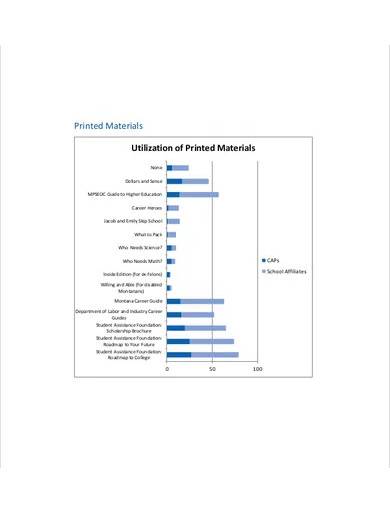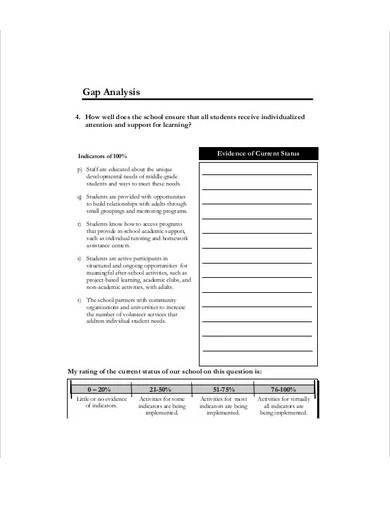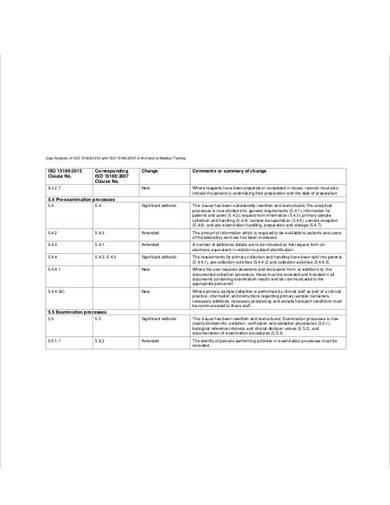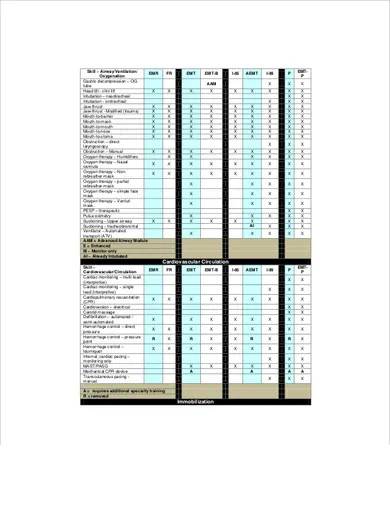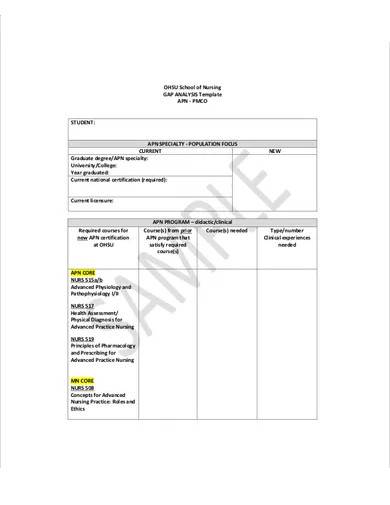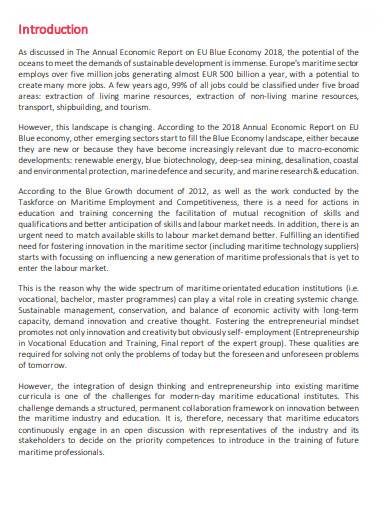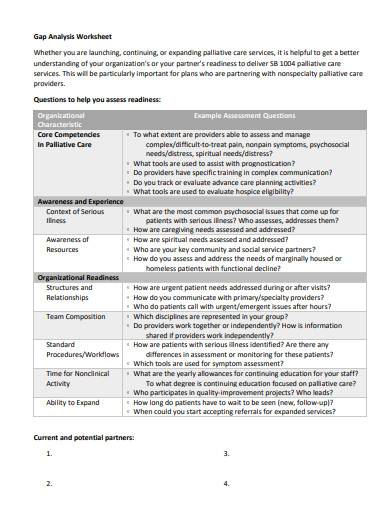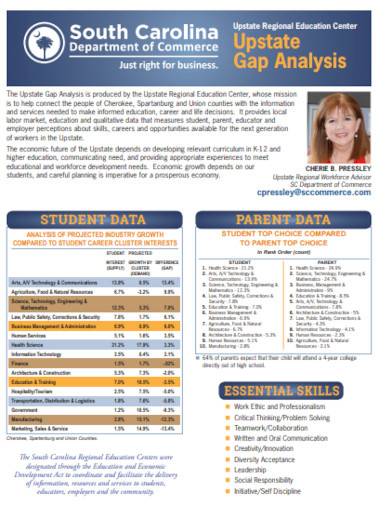Due to several issues and crises happening in our society and economy, there are many children, teens, and young adults who are struggling in poverty and getting the right education. The goal is not to obtain a system in which everyone achieves to the same level but rather to come to a point where no one arrives and works within a system at a disadvantage that is not of his or her own making. In this article, we provide you some helpful steps and a wide array of downloadable gap analysis templates useful in creating your education gap analysis report. Keep on reading!
FREE 10+ Education Gap Analysis Samples
1. Education Gap Analysis Template
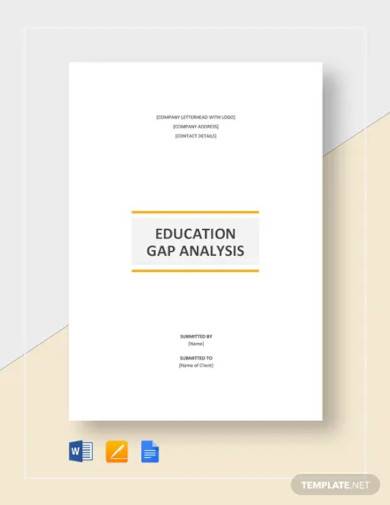
2. School Gap Analysis Template
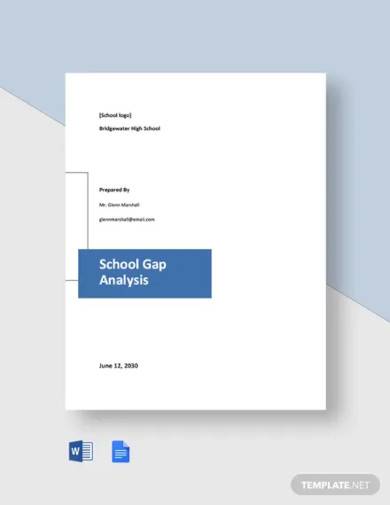
3. Higher Education Gap Analysis
4. Special Education Gap Analysis
5. Formal Education Gap Analysis
6. Medical Education Gap Analysis Template
7. Nursing Education Gap Analysis
8. Gap Analysis Format Template
9. Gap Analysis Worksheet Template
11. Upstate Gap Analysis Template
What is an Education Gap Analysis Report?
The book “Explicit Direct Instruction (EDI)” explains that formal education is based on the premise that students learn as a direct result of classroom instruction. That’s why children are sent to school for 13 years to receive proper education in a structured fashion by a teacher in a class. Research studies have shown that 20% of students will perform well independent of the effectiveness of classroom instruction.
However, it’s different in today’s era where many look for high standards for all students. Thus, an education gap analysis report is an important tool to focus exactly on how you will help the students to fill the gap in their education if there’s any along the support of their advisers and teachers.
How to Create an Education Gap Analysis Report
Creating a gap analysis report provides some advantages in identifying problems to improve the teacher’s tactics and strategies in teaching different kinds of students, as well as to efficiently guide them in their studies.
We recommend that you use our templates above that you can use conveniently. Here are the steps that work after you download your selected template:
1. Determine the area or learning gap
Which students need additional assistance? What specific standards were not accomplished last year? What knowledge and skills can students develop to succeed and become progressive in their studies? Use these questions effectively as you search for the potential gaps that exist in your class.
2. Gather important data
Dig deeper and observe the previous assessment data and performance tasks of your students’ proficiency. Doing this will help you gain clear insight on how you will develop lessons suitable for the needs of your students.
3. Analyze their current learning capability and performance
In order to properly assess and analyze the students’ learning capabilities and performance levels, you need to identify first the learning objectives. Know the concepts or skills that students need to display. You should be able to determine the criteria for each level of performance by individual students. Use a grading system so that you can analyze their skills according to the points they earned in their current studies.
4. Make some comparisons
Making comparisons of their past and current performance is essential so that you are able to pinpoint the skills that they need to enhance more. Also, if they already have some skills that can help in their learning abilities, you can help them use those skills to gain a new set of skills and competencies, facilitating their growth in their studies and overall education.
4. Explain the gap and set conclusion
The last step you need to do is explain each learning gap and think carefully about the practical solutions that may greatly help your students in minimizing their education gap. Then, set a conclusion in your gap analysis report.
FAQ
A gap analysis in education is the method of determining the difference between present knowledge, skills, and practices. What is a gap analysis in education?
It’s the gap between where you are and where you want to be, the gap between the latest teaching and upgraded teaching.What is a curriculum gap?
If you noticed that your child or student is having a difficult time in reading, spelling or math, add another session or two into the day to practice in this gap effectively. To motivate your child or student, you can incorporate games, as long as there are results in short periods of a few weeks.How do you fill in learning gaps?
An article explained that to address developmental gaps, you need to establish benchmarks and monitor progress. Set up a time for student self-reflection. Be open minded and avoid assumptions. Build up relationships with parents. Use current texts and latest topics that your student can relate and become interested in.How do you address developmental gaps in the classroom?
Therefore, schooling, education, and learning are important subsets of one another. Despite several states and governments’ investments in schooling for humanitarian and economical reasons and intentions, there still exists an achievement gap that is correlated to the socio-economic background of young pupils and students. Despite this issue, if you’re one of many teachers out there, you should work your best to help students in attaining proper education and filling their learning gaps. Download a gap analysis template today and continue to reach your goals in improving students’ performance.
Related Posts
FREE 10+ Turnover Ratio Analysis Samples and Templates in PDF
FREE 10+ Soar Analysis Samples in PDF
FREE 10+ Rhetorical Analysis Samples in PDF
FREE 10+ Analysis of Alternatives Samples in PDF
FREE 10+ Failure Mode and Effects Analysis Samples in PDF
FREE 10+ Make or Buy Analysis Samples in PDF
FREE 10+ Fishbone Root Cause Analysis Samples in PDF
FREE 11+ Cost Volume Profit Analysis Samples & Templates in PDF | MS Word
FREE 6+ Corporate Portfolio Analysis Samples in PDF
FREE 10+ Fault Tree Analysis Samples in PDF
FREE 10+ Comp Analysis Samples in PDF
FREE 10+ Fishbone Analysis Samples in PDF
FREE 10+ Individual Swot Analysis Samples in PDF
FREE 10+ 5 Year Analysis Samples in PDF
FREE 10+ Benefit Costs Analysis Samples in PDF

